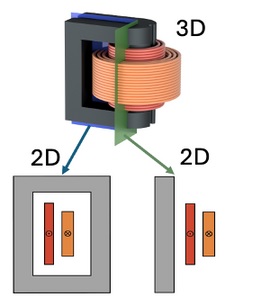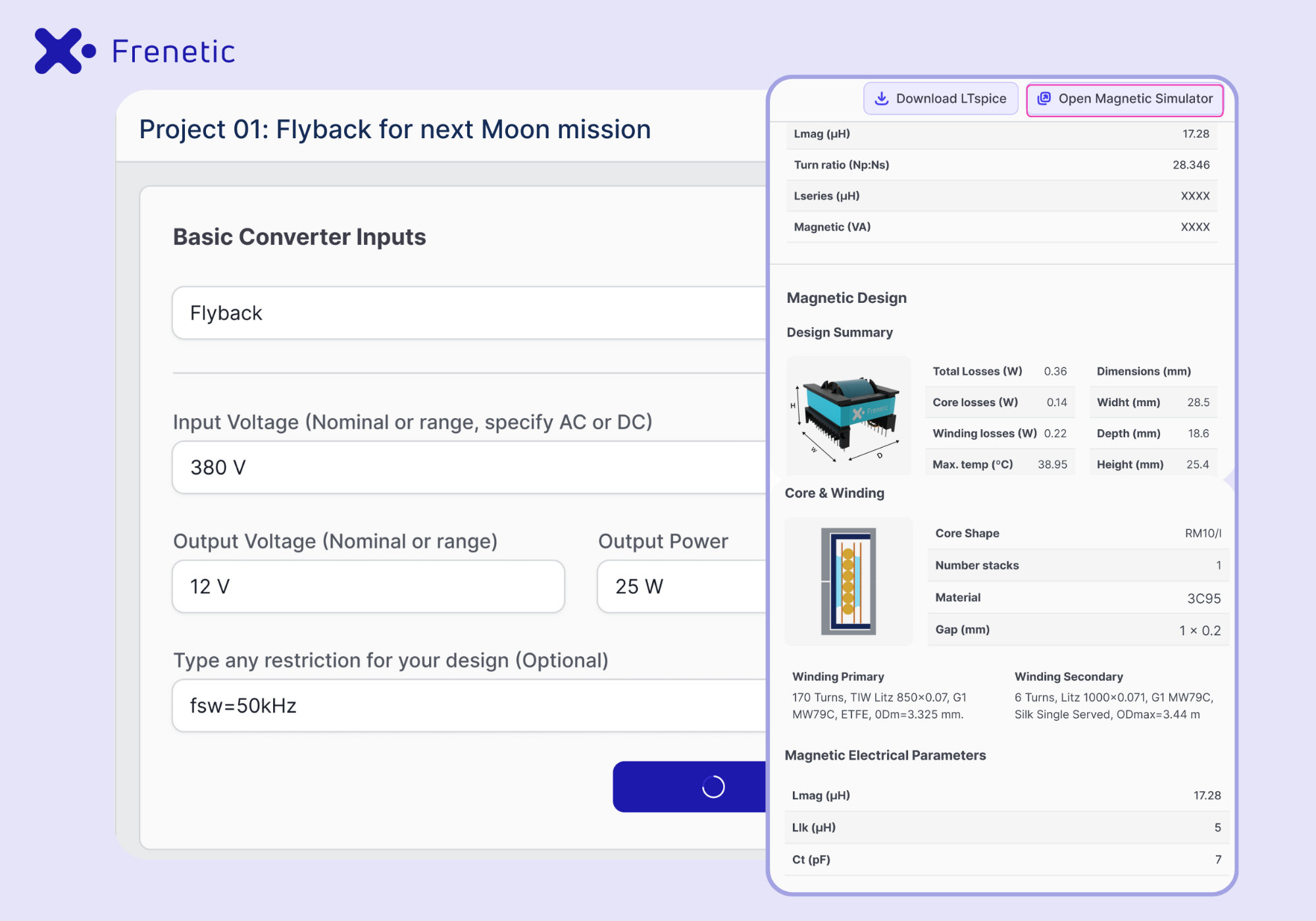Frenetic is a software technology company that is redefining the way engineers design magnetic components and power converters. Since 2015, they’ve specialized in high-frequency magnetic design, combining artificial intelligence, machine learning, and lab-validated simulation to deliver a new standard of speed, accuracy, and usability. The company’s tools are used by engineers in automotive, aerospace, industrial and power electronics companies worldwide.
Interview with Chema Molina, CEO of Frenetic.
What are the main areas of activity of the company?
Chema Molina: We focus on three main areas:
- AI-powered design of power converters
- Advanced magnetic simulation and component optimization
- Integration between specification, simulation, and prototyping of magnetic components.
What’s the news about new products/services?
C.M: We’ve just launched Frenetic AI, our most powerful converter design assistant yet. It automates the creation of electrical schematics, bill of materials, and simulation files for power converters, including different topologies and just released planar suggestion option. Engineers can go from vague specs to full designs in minutes. We’ve also released a new version of our Frenetic Magnetic Simulator, which now includes advanced ML models for foil winding losses, thermal simulation, and quasi-3D leakage inductance.

What are the ranges of products/services?
C.M: Our offerings include:
- Frenetic AI (Basic, PRO and Bounce): AI-powered platform for converter design
- Export capabilities to tools like LTspice, PLECS, and KiCad
- Planar Suggested design
- Magnetic suggested design
- Frenetic Magnetic Simulator: high-fidelity simulation and design of custom magnetic components
- Component libraries with vendor catalogs
- Export capabilities to tools like LTspice, PLECS, and KiCad
- Engineering support and onboarding for design teams
What is the state of the market where you are currently active?
C.M: The demand for high-performance and miniaturized power electronics continues to grow, especially in automotive, aerospace, and industrial sectors. However, many companies still rely on outdated methods like spreadsheets and manual calculations. The market is actively seeking more integrated, automated solutions, and that’s where we come in.
What can you tell us about market trends?
C.M: We’re seeing a major shift toward automation and AI in electronics design. Engineers want to eliminate repetitive tasks and focus on innovation. There’s also a growing need for thermal accuracy, faster prototyping, and tools that support integration with existing workflows. Open ecosystems and transparency in simulation are becoming key differentiators.

What are the most innovative products/services marketed?
C.M: Frenetic AI PRO is one of the most innovative tools in the power electronics space today. It not only selects topologies and components based on user specs but also generates LTspice/PLECS-ready simulation files, and provides temperature-aware design validation. Our simulator also features a machine-learning model for foil winding losses, trained on 5,000 FEM simulations, delivering industry-leading accuracy in milliseconds.
What estimations do you have for the second half of 2025?
C.M: We expect significant growth in PRO user adoption and strategic partnerships with IC vendors and magnetic manufacturers. Our roadmap includes full integration with PCB tools, expanded design coverage for topologies like LLC and Flyback, and new collaboration features for engineering teams. We’re aiming to double our user base and become the standard design tool for power electronics and magnetics design.


